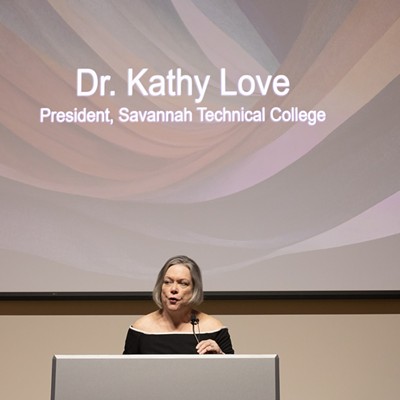At the end of October, just a few days before the mid-term election and the beginning of his "lame-duck" denouement as the state's executive, Governor Sonny Perdue announced that Georgia's high school graduation rate had reached a startling 80.8 percent, a clear vindication of the Republican administration's campaign to improve education, and the graduation rate in particular, over the last several years.
"Georgia's graduation rate rose to an all-time high...an increase of two percentage points over last year, and more than 17 percentage points since 2003," the press release stated.
With the announcement strategically placed in the home stretch of the campaign season, Democrats responded that the numbers were inflated - a sleight of hand aimed at political gains.
Politics aside, the announcement was a surprise considering Georgia's tradition of a relatively low academic success rate. A recent study from Johns Hopkins University found that out of 337 federally reported high schools in Georgia, 127 were "dropout factories" - a term used to describe schools where less than 60 percent of incoming freshman enter the 12th grade on time.
While numbers may not lie, the way those numbers are tabulated can be misleading. Rather than highlight a resounding a victory for new policies or more effective funding, Perdue's announcement showed just how little is understood about the number of students who receive high school diplomas versus the number that don't.
Adjustable rates
High school graduation rates might seem like a no-brainer when it comes to accounting for the success or failure of a particular school system, but the stats are a relatively new addition to the cadre of data used to monitor the quality of education.
Until the passage of No Child Left Behind (NCLB) in 2001, high school graduation rates were loosely kept, but the data wasn't tied to accountability, and there was no formal methodology for calculating the rate.
After NCLB, basic federal guidelines were put into place as a means of monitoring progress, but the guidelines contained enough flexibility that states could use a variety of different formulas, which provided little, if any, consistency to the data at a national level.
"It had to be a four year rate and it had to look at diplomas and not credentials," explains Chris Swanson, Vice President of Research and Development for Editorial Projects in Education (EPE), a group that independently calculates state graduation rates for its annual report.
"What most states ended up doing was gravitating toward a method called the Leaver Rate, which is what Georgia uses. There's any number of other ways states could calculate the rate."
Because maintaining an acceptable graduation rate was tied to funding incentives, states found a reason to cater their calculation methodology to the best possible results.
"To avoid sanctions under NCLB, many states and districts use creative ways to keep their graduation rates high," says a January 2009 report from the National Education Association. "For instance, some states do not count students as dropouts if they do not come back to school in September after being there in June."
The Leaver Rate, the calculation used by Georgia and 28 other states, takes the number of students who graduate with a diploma and divides that by the sum of all dropouts over the last four years plus graduates, so miscounting dropouts can be problematic to the accuracy.
"Dropout data historically tends to get undercounted. It's hard data to collect," says Swanson. "If you use that to calculate your graduation rate then you inflate your graduation rate."
Over the last several years, the state of Georgia's graduation rate methodology has produced consistently rosier outcomes than other sources using the same data but a different formula.
In 2006, Georgia reported a graduation rate of 72 percent. The same year, the US Department of Education found the state's average was closer to 62 percent, and the EPE's calculation totaled 56 percent.
The difference in all of the findings isn't the base data, it's the formulas used by each. The Leaver Rate relies on dropout data and is generally on the high side. The other two use variations on what is known as the Cohort Rate, which uses year-over-year enrollment data.
Accuracy vs. progress
Even with a gap of more than 15 percent between its self-reported rate and those from independent analyses, there are 14 states with greater graduation rate disparities than Georgia.
The widespread data discrepancies lead to separate efforts by both the National Governor's Association and the US Department of Education to improve accuracy and consistency across the country.
In 2005, the National Governor's Association (NGA) created the Graduation Counts compact, a pledge to create a unified graduation rate formula, which was signed by all 50 governors.
"We actually brought together a group of state leaders, national experts and researchers to develop a specific calculation," says Ryan Reyna, Senior Policy Analyst for the NGA. The formula chosen by the NGA's team of experts was a cohort rate, which is widely agreed to be more accurate, albeit lower than other formulas.
Five years later, 20 states have put a version of the NGA's formula into practice. The main obstacle to broader adoption of the formula seems to be concern over the expected drop in the graduation rate following the switch.
Georgia had announced its intention to change over to the NGA rate starting in 2009, but then decided to wait until a new federal mandate requires all states to switch to a cohort calculation starting in the 2011-12 school year.
"We had been calculating that same rate for a number of years," says Bert Brantley, Governor Perdue's Director of Communications. "The one thought was, are we just gonna confuse people by changing it in the middle of this push to improve the graduation rate."
Whether or not Georgia's rate is accurate, because the rate has been calculated using the same formula consistently, it's likely that the progress the state has made over the last several years is substantive (although hardened skeptics might argue that improvement could also be achieved by under-reporting dropouts.)
"There are problems with the current rate, but even with the problem, at least you're comparing apples to apples and you're showing progress," says Brantley.
His sentiment is echoed by Kurt Hetager, the Public Information Officer for the Savannah-Chatham County Public School System (SCCPSS).
"We've been calculating it the same way for the past couple years, so there's nothing in there from a data and information standpoint that would skew that," says Hetager.
SCCPSS uses the Leaver Rate and reports that 77.5 percent of students graduated during the 2009-10 school year, an increase of 15.5 percent in the last three years.
Even if the number isn't exactly correct, there have been quite a few changes within the school system that have helped promote improvement.
"What's made the biggest difference is our Small Learning Communities grant that we got," explains Sharon Sand, Senior Director of Curriculum and Instruction. "It's allowed us to bring on a graduation coach to each of the high schools."
The graduation coaches work with students individually to keep them on track, and should they need to catch up on credits also helps enroll them in a credit recovery or credit advancement program where they can complete courses online.
"When you get to big high schools, kids tend to fall between the cracks," Sand explains. "The Small Learning Community has provided an opportunity for kids to connect to an adult in the school, and that adult is following them very closely."
SCCPSS also seems to err on the side of caution when categorizing which students are dropouts when it calculates its rate.
"Each kid is coded, and if we can't find a child, if we can't find any information, that's considered a dropout," says Sand.
Ups and downs
When the graduation rate formula changes, there is no guarantee of what the results will be.
In Indiana, a change from the Leaver Rate to a Cohort Rate nearly cut the graduation rate in half. In Alaska, the use of the Leaver Rate under-reported the graduation rate when compared to independent analysis. The expectation, however, is that the graduation rate will decrease after the switch.
If the average discrepancy between state and cohort data remains consistent - about 15 percent - then the state's graduation number might be 66 percent, which means that after several years of efforts, Georgia has ensured that roughly two thirds of its children receive high school diplomas.
Progress is a step in the right direction, but in a time when the debate over education has changed to discussions of global competitiveness, ensuring two thirds of students have achieved a basic level of education probably doesn't merit a press release.




























